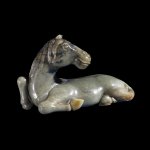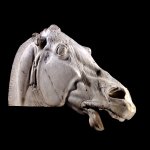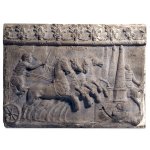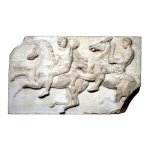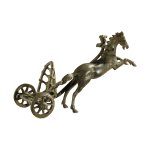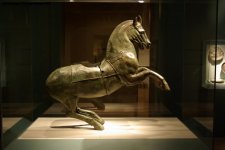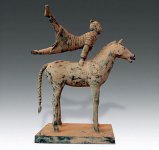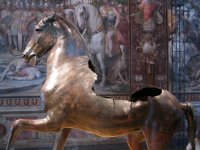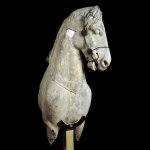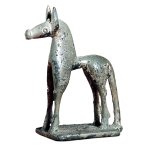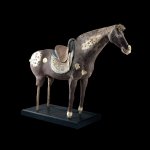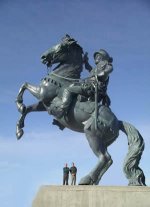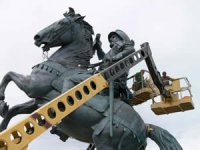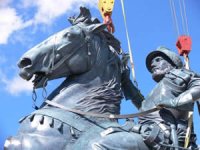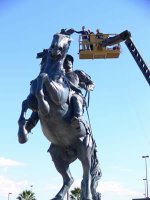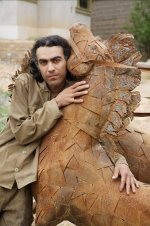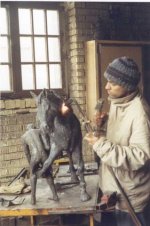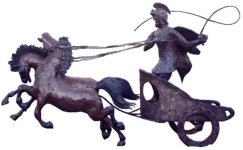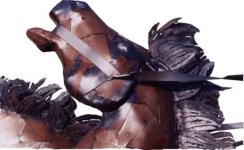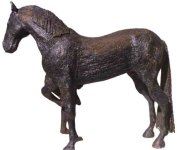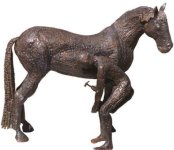Head of the horse of Selene from the east pediment of the Parthenon
This marble head of the horse of Selene, goddess of the moon, was carved around 438-432 BC. It is one of the sculptures from the east pediment, or gable, of the Parthenon, a temple set on the flat-topped rock known as the Acropolis in Athens.
The sculpted group of figures that once filled the very centre of the east pediment showed the birth of the goddess Athena from the head of her father Zeus. The figures that represented Athena and Zeus are now lost, but some of those who witnessed the birth are preserved. In one corner of the triangle, the time of day was set by the chariot of Helios, god of the sun, rising at dawn, and in the other corner, by the chariot of Selene, the Moon goddess, sinking beneath the horizon. One of Selene's horses' heads is shown here. Others are preserved in Athens. This is perhaps the most famous and best loved of all the sculptures of the Parthenon.
The horse's head is just over 80 centimetres long, about life-sized, ending just at the level of the jaw-line, and is carved from white marble. The jaw would have hung over the edge of the pediment floor. The sculptor has captured the very essence of a beast at the utmost limits of its physical endurance. A long night spent drawing the chariot of the Moon through the sky has left it exhausted and gasping for breath. The skin seems to be stretched over its bones, taut against the great flat plate of the cheekbones. The nostrils are distended, the round, pupil-less eyes bulge with effort, the veins and sinews stand out, and what remains of the ears lie almost flat against the head. The tongue lolls in the gaping mouth.
The horse's mane has been cropped into an elaborate style, and stands erect, like the bristles of a brush. The back of the horse's head is carved in detail, which is surprising, because once fixed on a pediment, the back would not be seen. Creases in the skin as the horse turns its head outward follow the curve of the jaw-line. The sculptor has used the natural veining in the marble to echo the angle of the line from ear to jaw. The grey veining cuts through the eye, and runs down towards the muzzle.
The surface of the marble is a creamy-yellow in places, and veined with streaks of grey. The head is not completely intact. The nostrils have been chipped, and a chunk is missing from the top of its head, destroying his left ear almost entirely. The right ear is badly chipped, and a section of the nose is pitted and scarred. Small holes in the centre of the face, and beside what remains of the left ear, indicate where a bronze bridle, long since lost, would have been attached. Even with this damage, the creature remains remarkably expressive.

